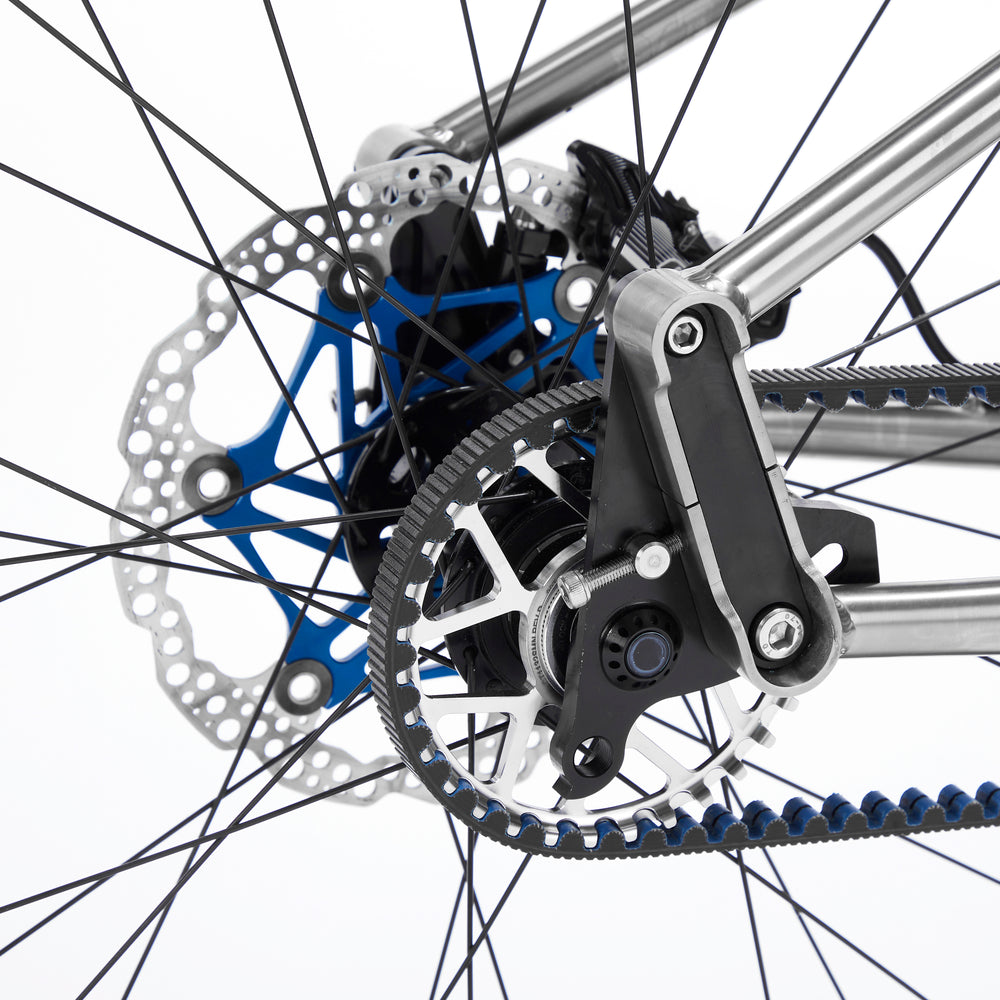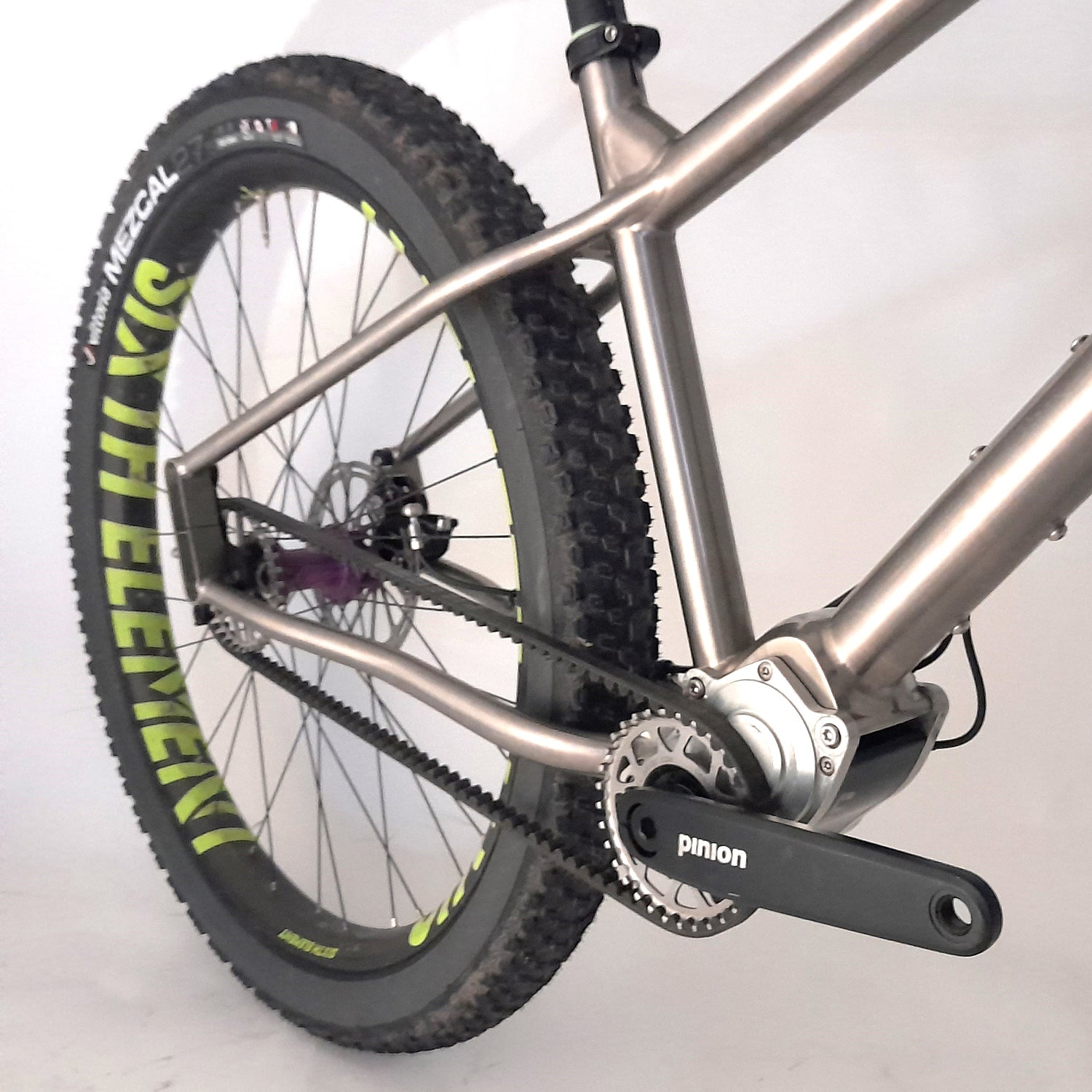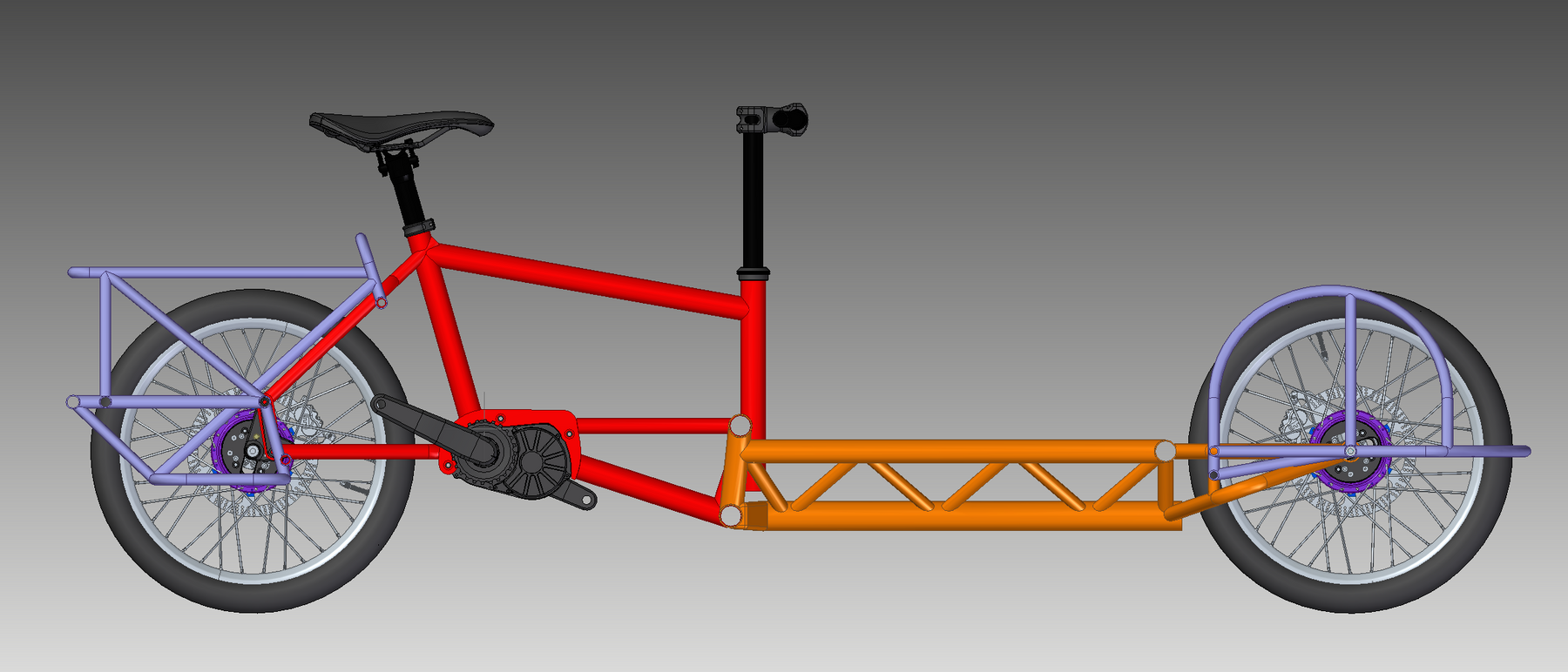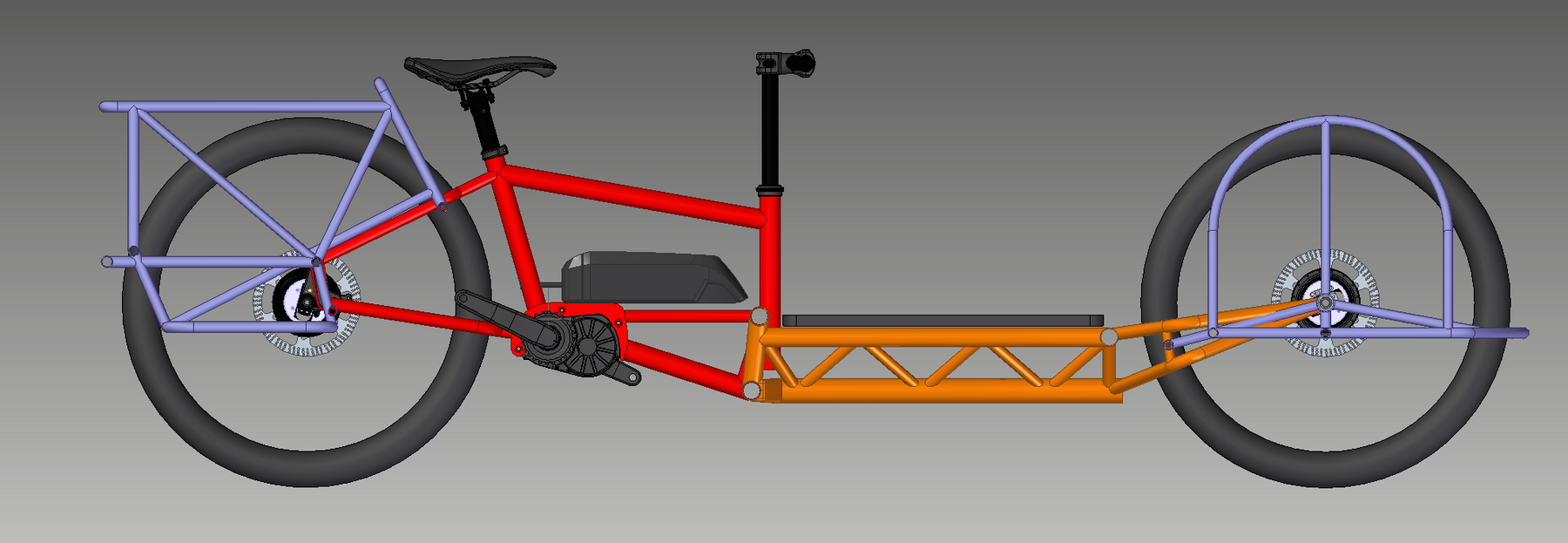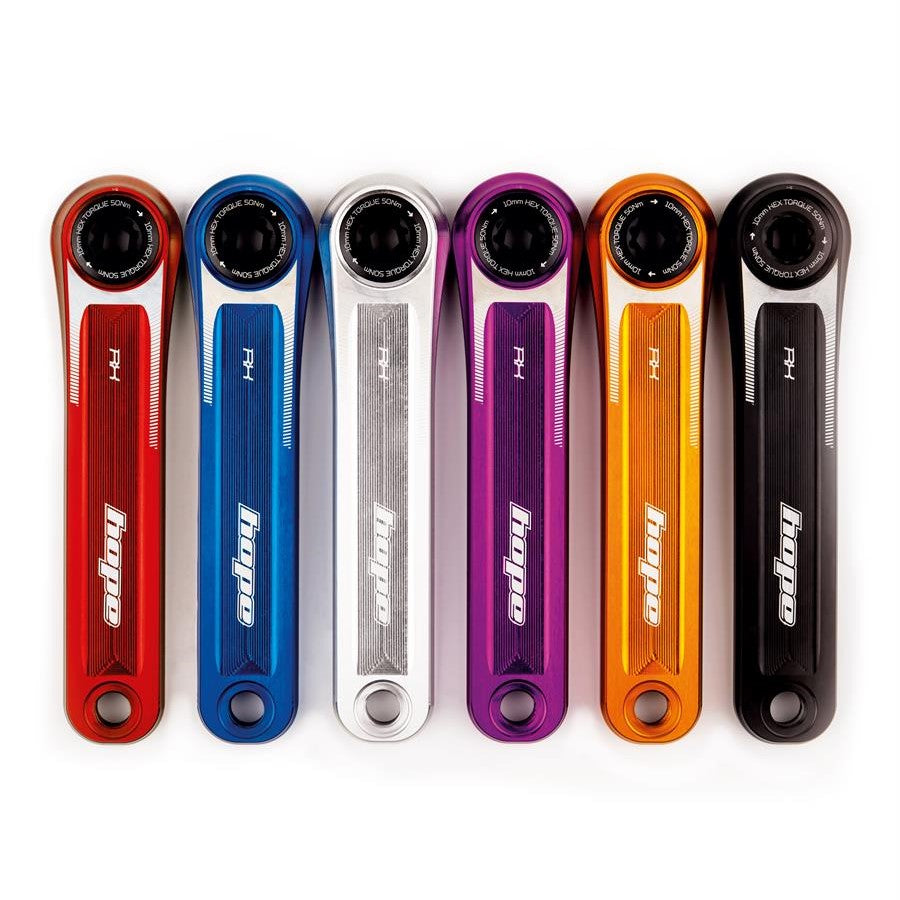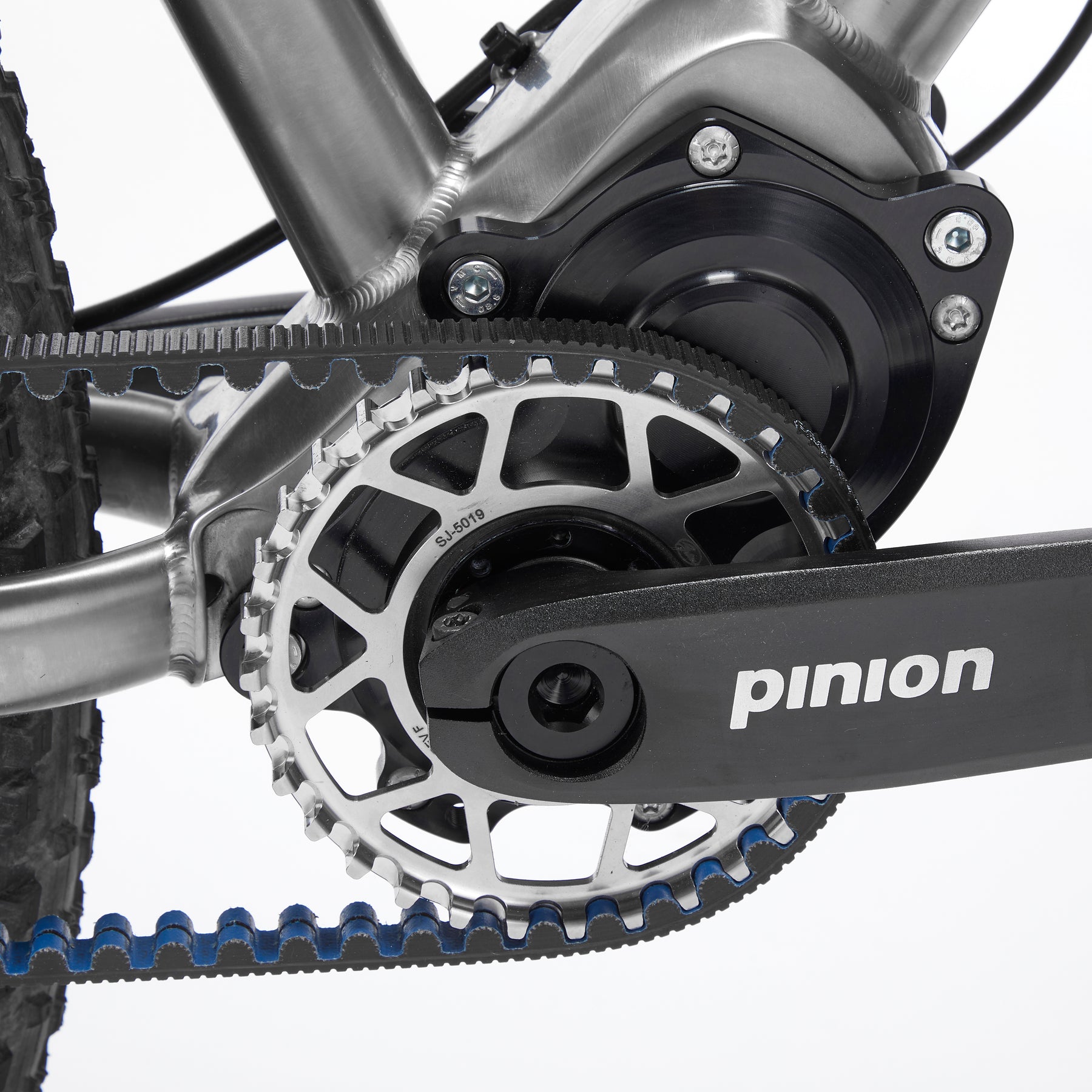
When it comes to drivetrain reviews there is one thing, that does not get much of a mention. MUD. Mud, Sand, Gravel and all the elements of weather, all take a toll on our drivetrains. Reliable longterm reviews are hard to find. Component reviews that compare numbers in lab conditions, are all well and good but these are not from the real world of riding.
I was always motivated at Olsen Bicycles to produce some bikes with low-maitenance long-distance drivetrains. Pinion gearboxes have always been part of this puzzle. My bicycle brand Olsen Bicycles have two Titanium models which come with the Pinion Gearbox at its heart.
In this article, I will try to answer many of the questions surrounding bicycle drivetrains and what it is like to ride a Pinion Gearbox bike…

WE HAVE TWO GEARBOX MODELS TO CHOOSE:
We now have some Pinion Bikes in Lewes to try. The Swan which is a Trail Geometry and can fit either 29 or 27.5+ tyres and the Lamb which is a classic Cross Coutry geometry and is perfect for fast bikepacking.
WHAT IS A GEARBOX BIKE LIKE TO RIDE?
I would not develop a design around the Pinion gearbox if I did not believe in the benefits. I have had my Pinion P1.9CR gearbox for over 7years now. It did over at least 3000 miles of off-road commuting a year and approx 15,000 miles over 5years. It has out lived its original frame and is now on a Titanium frame.
Pinion Gearboxes are quiet and you feel the precision of the gears. You are not locked in but they will not shift when unwanted. Pinion Gearboxes are not a planetary gear system, like the Rohloff Speedhub, so all gears are feel the same. There is slightly more drag which goes away as the gearbox wears in its first 1000 miles. It is not something that I notice.
Shifting is something that you get used to. New Gearboxes will not let you shift under load, however by easing off slightly or shifting while your favourite foot is on its back-stroke, you can make a change even while standing. Read the terrain, carry some speed and shift before you need too.

P1.18 VS P1.12 (or C1.12)
Pinion always recommend the P1.18 for touring and bikepacking as the P1.18 as the gear steps are 11.5%. However this is beyond any other drivetrain. The P1.12 has 17.7% gear steps. This is equivilant to shifting from the 36–42t on a mountain bike cassette or 11–13t on any other cassette.
PRO’s & CON’s:
No Hanger
Good Chainline
Symmetrical — no dish rear Wheel
Belt Compatible
Good Gear Range
Shifting without pedalling
Gear steps are evenly spaced
Instant gears
CONS:
Cannot Shift under load?
Drag and Friction Losses
Extra weight
WHAT TO EXPECT?
There are a few CONs that customers ask all the time:
Weight, Shifting and Drag. I believe these are all minor problems.

WEIGHT:
The P1.12 Pinion gearbox is 600g heavier than a derailleur drivetrain. The P1.12 Pinion gearbox is 200g heavier than a Rohloff Hub. However all of this is compensated by having the weight in the middle of the frame. I only notice it when lifting the bike over fences. It is not like rotational weight of tyres.
SHIFTING UNDER LOAD:
When shifting, you need to release the pressure on the cranks (for a micro second) to change into a lower gear, which is easier. Once you’ve mastered the technique, it only takes a fraction of a second. It is not true at all what has been said that you must halt and wait before shifting. It is the same strategy that we all should do (but don’t) when upshifting a derailleur drivetrain.
In a simple twist, you can drop 2–3–4 gears. With the exception of the 4/5 and 8/9, shifting to a higher gear (harder) can be done while cycling. Therefore, while descending, you can be on the cranks and change down as you pick up speed. The two specified intervals have not been a problem for me. You’ll be doing the most of your descents in gears 9, 10, and 11. You are often between the gears of 6 and 8 if you miss a corner section and need to pick up speed. 6/7&8 are the gears you use the most.
I almost exclusively shift now while descending without pedalling. Without worrying about getting the pedal strokes in, you can just prepare yourself for each segment of the path. Shifting without pedalling is one of the best abilities you can have for riding with gravity, and its importance cannot be overstated.
There are critics of Pinions shifting, but for me and the people I know, it is completely unimportant. The indexing is actually in the gearbox, so there is no miss-shifting or crunching of gears. Once you are in you are in. Shifting does get better over time, as the gearbox wears in, the shifting has less resistance.
DRAG & FRICTION:
Drag is another drawback that people can worry about. I have spoken to several Pinion owners, who had similar concerns about drag. They all agree that once they try, they don’t feel noticeable drag compared to a typical derailleur configuration. There may be a little bit more, but I can’t feel it in my legs.
Each rider should consider their type of riding and the actual needs for a bike setup. We have built gearbox bikes with a low target weight of 13Kg. With a balance of sensible components, tyres and wheels this is easliy achieved. The Gearbox weight is static and down low, like carrying some extra water bottles. Rotational weight is down to your tyre selection and Pinion allows the use of a singlespeed rear wheel, which are symetrical, stronger and can be built lighter.
PINION GEAR RANGES
P1.18 = 636% range with 11.5% steps
P1.12 = 600% range with 17.7% steps
P1.9XR = 568% range with 24% steps
Rohloff 14-speed = 526%
1x deraileur systems = 500%
As I mentioned earlier, the steps of 17.7% is is equivilant to shifting from the 36–42t on a mountain bike cassette or 11–13t on any other cassette.

AVERAGE DRIVETRAIN EFFICIENCIES
2X drivetrain 96.2% efficient (Drivetrain loss of 7.6w @ 200w)
SRAM 1X drivetrain 95.1% efficient (Drivetrain loss of 10w @ 200w)
Rohloff : 94.5% efficient (Drivetrain loss of 11w @ 200w)
Pinion P1.12 : 94.0% efficient (Drivetrain loss of 12w @ 200w)
Pinion P1.18 : 90.5% efficient (Drivetrain loss of 19w @ 200w)
On paper this does not look as good, however we need to remember that there are other factors involved with drivetrain losses. A typical 1x derailuer drivetrain cannot run as straight chainline across its gear range, its smaller chainring results in more chain tension, the chain has to articulate more over the smaller cassette cogs, and the chain has to run faster on the smaller cogs. This makes the average look better than it actually is in lower and higher gears.
Drivetrains are only part of the puzzle when comparing efficiencies and gains. We also need to compare the speed differences of gearboxes to luggage weight, aerodynamics, tyres and dynamo hubs.
A P1.12 Pinion gearbox is 2% slower than derailleur drivetrain or 0.5% than the Rohloff Speedhub. This is similar to a dynamo hub being 1–3% slower than a regular front hub. The largest speed difference come from tyre rolling resistance (5–7%) and aerodynamics (also 5–7%).
If you want a bicycle with a good selection of gears and very little maintenance, then Bicycles with gearboxes are a good investment. Pinion Gearboxes just keep running and out last the 5 year warranty. I have have been running my 9 speed for over 7 years with very only a few oil changes and very little cleaning. A bicycle coupled with Gates CDX Carbondrive and you have a machine that will keep going in all trail conditions. Whether you are commuting, touring, bikepacking or just trail riding, a Pinion gearbox bike will keep going more than you will.

